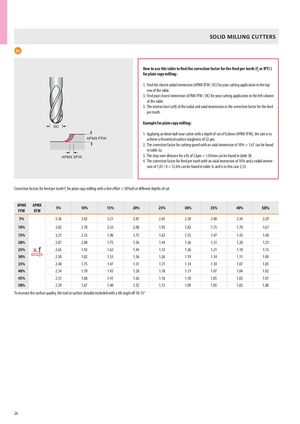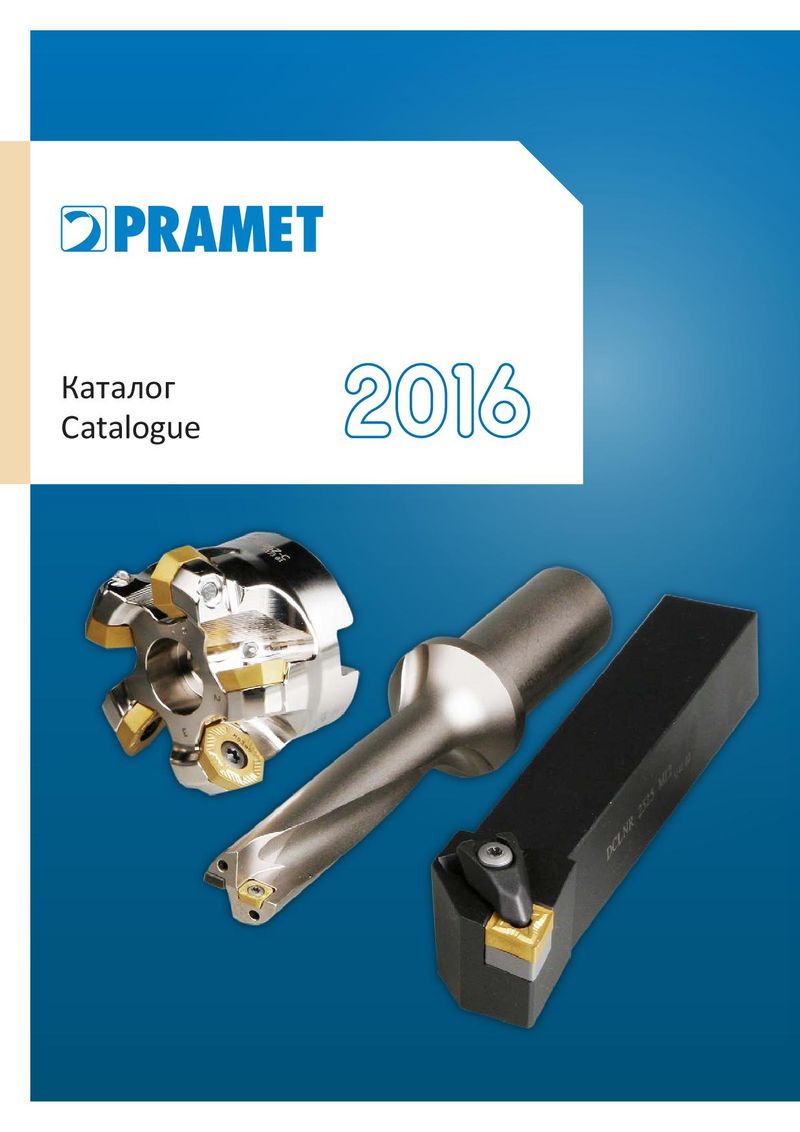Брошюра Dormer Pramet новинки 2021 - страница 25
Навигация

SOLID MILLING CUTTERS 3c How to use this table to find the correction factor for the feed per tooth (fz or IPT) ) for plain copy milling: 1. Find the closest radial immersion (APMX EFW / DC) for your cutting application in the top row of the table. 3. Find your closest immersion (APMX FFW / DC) for your cutting application in the left column of the table. 3. The intersection (cell) of the radial and axial immersions is the correction factor for the feed per tooth. Example for plain copy milling: DC 1. Applying an 8mm ball nose cutter with a depth of cut of 0,8mm (APMX FFW), the aim is to APMX FFW achieve a theoretical surface roughness of 32 μm. 2. The correction factor for cutting speed with an axial immersion of 10% = 1,67 can be found in table 3a. APMX EFW 3. The step-over distance for a Rz of 32μm = 1,01mm can be found in table 3b. 4. The correction factor for feed per tooth with an axial immersion of 10% and a radial immer- sion of 1,01 / 8 = 12.6% can be found in table 3c and is in this case 2,33. Correction factors for feed per tooth fz for plain copy milling with a line offset < 50%xD at different depths of cut APMX APMXFFWEFW 5% 10% 15% 20% 25% 30% 35% 40% 50% 5% 5.26 3.82 3.21 2.87 2.65 2.50 2.40 2.34 2.29 10% 3.82 2.78 2.33 2.08 1.92 1.82 1.75 1.70 1.67 15% 3.21 2.33 1.96 1.75 1.62 1.53 1.47 1.43 1.40 20% 2.87 2.08 1.75 1.56 1.44 1.36 1.31 1.28 1.25 25% x.f 2.65 1.92 1.62 1.44 1.33 1.26 1.21 1.18 1.15 30% 2.50 1.82 1.53 1.36 1.26 1.19 1.14 1.11 1.09 35% 2.40 1.75 1.47 1.31 1.21 1.14 1.10 1.07 1.05 40% 2.34 1.70 1.43 1.28 1.18 1.11 1.07 1.04 1.02 45% 2.31 1.68 1.41 1.26 1.16 1.10 1.05 1.03 1.01 50% 2.29 1.67 1.40 1.25 1.15 1.09 1.05 1.02 1.00 To increase the surface quality, the tool or surface shoulde inclinded with a tilt angle off 10-15° 24
 Общий каталог Dormer Pramet 2016
Общий каталог Dormer Pramet 2016 Каталог Dormer Pramet обработка отверстий 2021 - 2022
Каталог Dormer Pramet обработка отверстий 2021 - 2022 Каталог Dormer Pramet фрезерование 2021 - 2022
Каталог Dormer Pramet фрезерование 2021 - 2022 Общий каталог Dormer Pramet 2017
Общий каталог Dormer Pramet 2017 Каталог оснастка Dormer Pramet 2016
Каталог оснастка Dormer Pramet 2016 Каталог Dormer Pramet обработка резьбы 2021 - 2022
Каталог Dormer Pramet обработка резьбы 2021 - 2022